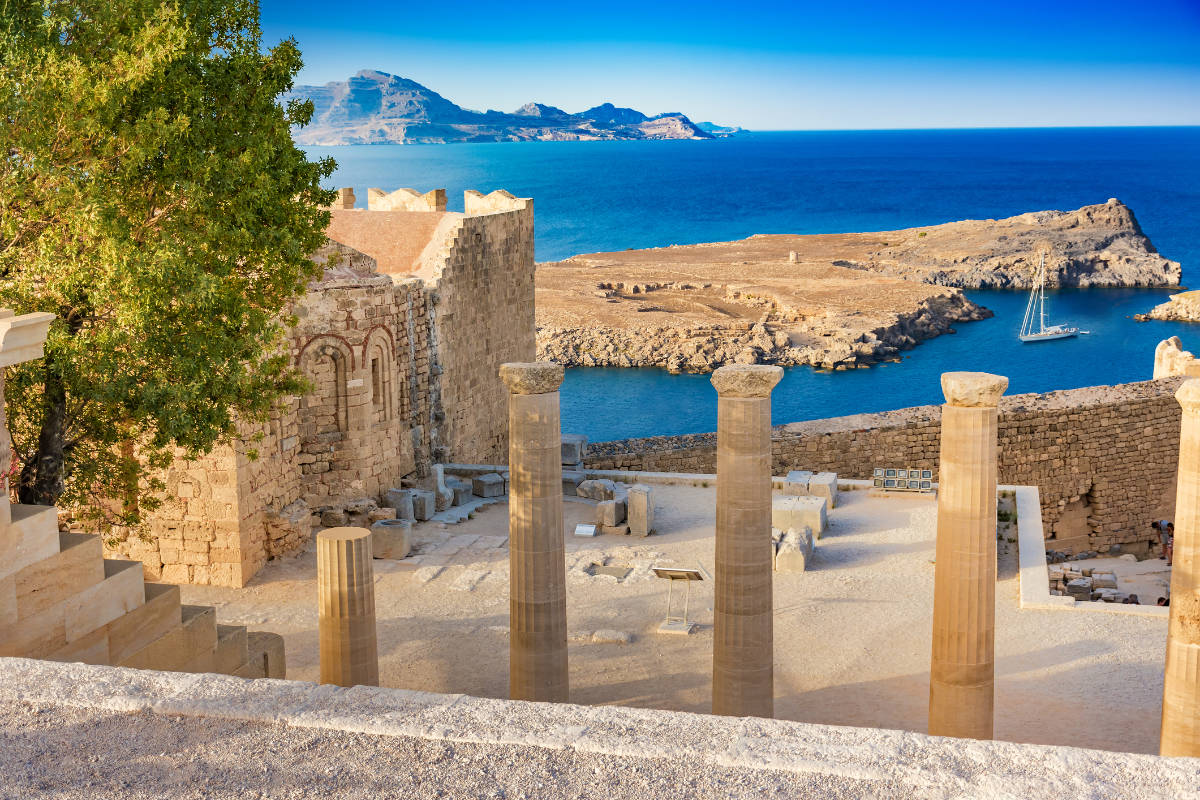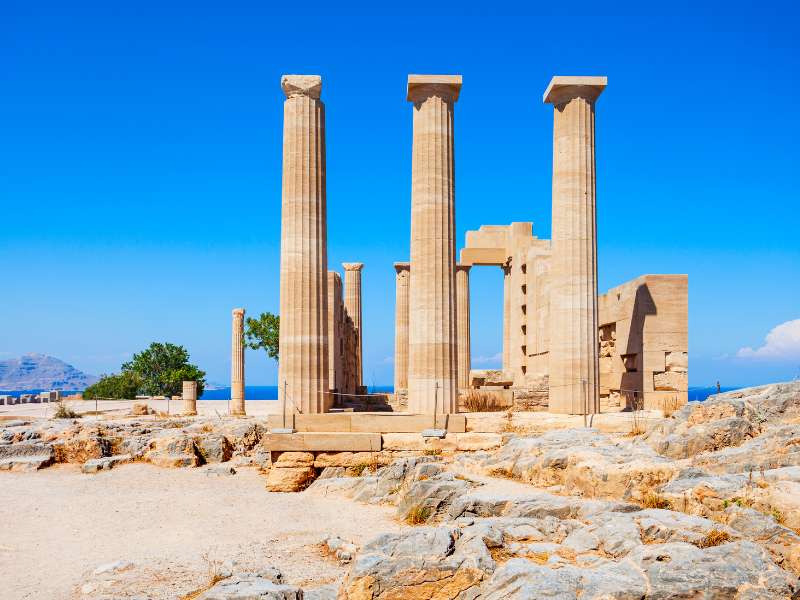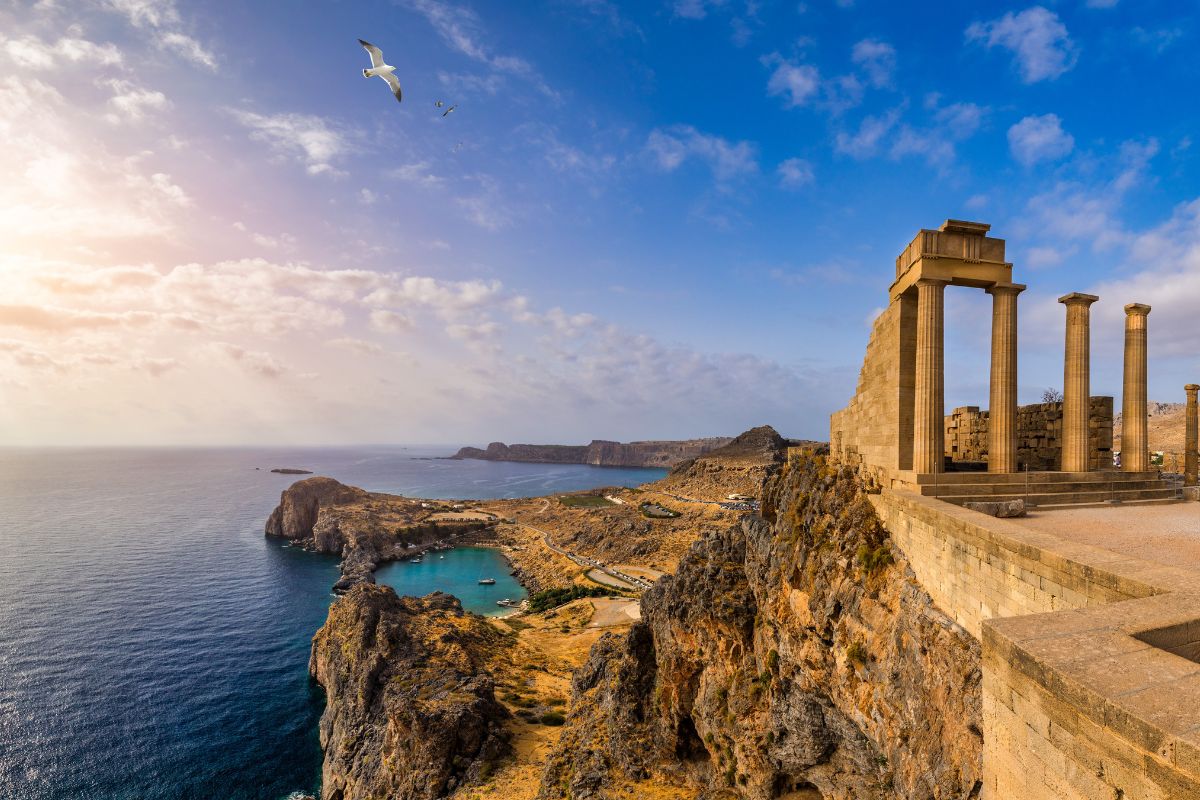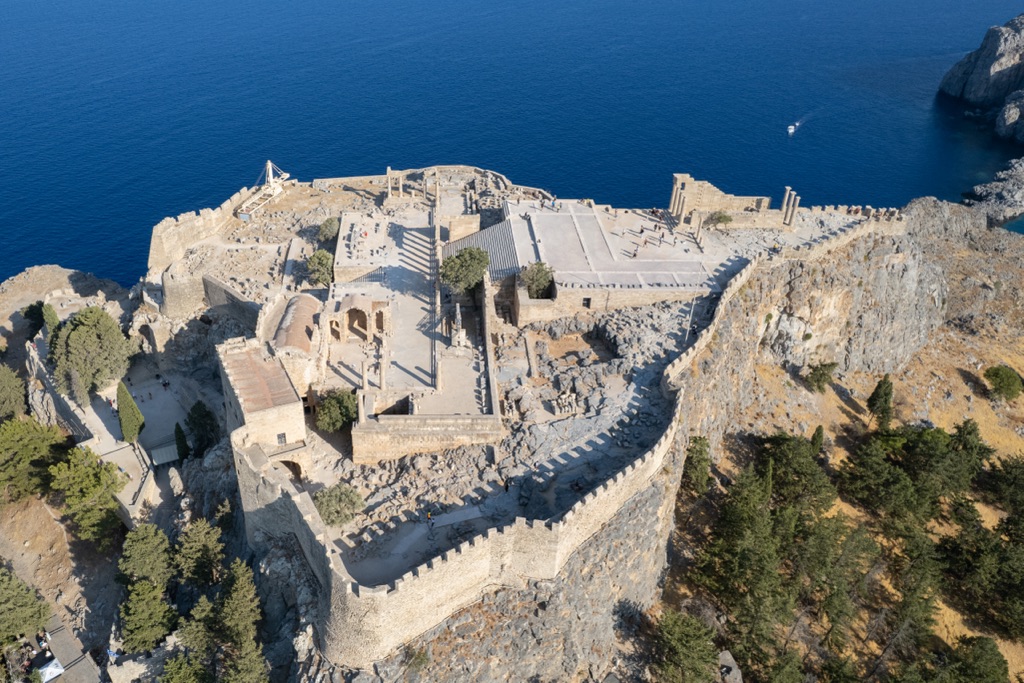The Acropolis of Lindos, one of the most important ancient sites on the island of Rhodes, Greece, stands proudly above the picturesque village of Lindos, offering sweeping views of the Aegean Sea. This ancient acropolis, with its rich history and architectural grandeur, continues to captivate visitors from around the world. Not only does it provide a fascinating glimpse into ancient Greek civilization, but it also blends influences from Roman, Byzantine, and medieval periods, making it a symbol of the island’s diverse historical legacy.
The Temple of Athena Lindia
At the heart of the Acropolis of Lindos lies the Temple of Athena Lindia, dating back to the 4th century BC. This impressive temple, dedicated to Athena Lindia, the goddess of wisdom and protector of the city, was one of the most important religious centers in ancient Rhodes. Though the original structure was destroyed by an earthquake, it was later rebuilt, and today, visitors can admire the grand ruins, including towering columns and intricately designed architectural features. The temple’s enduring presence reflects the significant role religion played in the daily lives of the ancient Rhodians and their devotion to their deities.

Hellenistic Stoa and Roman Influence
Another notable feature of the Acropolis is the Hellenistic Stoa, built in the 3rd century BC. This structure, with its elegant columns and expansive space, is a testament to the Hellenistic period’s architectural style and its cultural impact on the island. The stoa likely served as a gathering place for both religious ceremonies and civic activities, showcasing the importance of communal spaces in ancient Greek society.

In addition to Greek structures, the Acropolis of Lindos also reflects Roman influence. The Roman-era cistern, which once supplied water to the acropolis, highlights the Romans’ engineering prowess and their ability to adapt and enhance earlier Greek constructions. These features offer a glimpse into the island’s continuous historical evolution, with various civilizations leaving their mark over the centuries.
Byzantine and Medieval Influence
The Byzantine castle located on the Acropolis of Lindos adds another layer of history to this ancient site. Built on top of earlier fortifications, the castle provides valuable insight into the medieval period, when the island of Rhodes was a strategic stronghold. The castle’s architecture reflects Byzantine military needs, with defensive walls and watchtowers designed to protect the settlement from invaders.

The medieval period left an indelible mark on the Acropolis, and the Byzantine castle, along with other medieval structures, serves as a reminder of the region’s role in the broader geopolitical struggles of the time.
A Strategic Location and Modern-Day Exploration
The strategic location of the Acropolis, perched on a hilltop overlooking Lindos village and the Aegean Sea, was crucial in antiquity. The elevated position provided natural defenses and a commanding view of the surrounding coastline, making it an ideal site for both military defense and trade routes. Its proximity to the sea also made it an important hub for commerce and communication.

Today, visitors can explore the Acropolis and its many features, from the ruins of the Temple of Athena Lindia to the medieval Byzantine castle. As they walk through ancient gateways, they can soak in the panoramic views of the village below and the crystal-clear waters of the Aegean. The blending of ancient ruins with breathtaking natural beauty makes the Acropolis of Lindos a must-visit destination for history enthusiasts and travelers alike.
A Symbol of Rhodes’ Historical Depth
The Acropolis of Lindos is more than just an archaeological site; it is a symbol of the island’s rich and varied history. From its origins in ancient Greece to its Roman, Byzantine, and medieval phases, the Acropolis offers a fascinating narrative of cultural exchange, military strategy, and religious significance. The ruins, while weathered by time, stand as enduring reminders of the civilizations that once thrived here and the lasting legacy they left behind. Today, it remains a cultural and historical landmark, bridging the past with the present, offering visitors a unique opportunity to experience the island’s complex history in a single spectacular setting.


